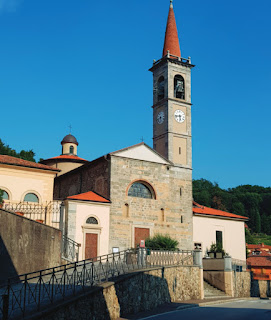
The parish dedicated to San Vito was probably built starting from the 8th century on a previous pagan temple, as suggested by a stele dedicated to Jupiter Summano recovered during some restoration works in 1821 and today preserved inside the Canonica of San San Salvatore.
Attested in a list of churches of the diocese of Milan at the end of the 13th century, during the 16th century it had a single nave and modest dimensions: at this time the church was still a simple oratory. In fact, it was only with San Carlo Borromeo that it acquired the importance and title of parish church, until then held by the Canonica of San Salvatore. In 1834 it was enlarged to three naves designed by the architect Biagio Magistretti and in 1936-1938 it was further enlarged with the addition of the transept and the expansion of the presbytery designed by the architect Giovanni Barboglio.
The frescoes in the apse, in the transept and in the nave date back to this last modification: they are the work of the painter Umberto Marigliani native of Bergamo, known by the nickname "Tiepolino" for his rapid execution, and depict episodes from the life of Jesus, in which pays much attention to the figure and role of Joseph, a saint highly valued by the Pope Pius XI. In the dome, however, the Madonna del Rosario is represented surrounded by saints.
Inside the church other important works are preserved, such as the seventeenth-century Crucifix canvas depicting San Carlo Borromeo from the same period, a painting representing San Vito painted by Livio Cazzaniga from Barzaniga, a well-known twentieth-century painter and, near the altar of seventeenth-century style, a stole that belonged to the saint Pope John XXIII.
The bells present on the current bell tower are the result of a fusion between the original ones and those coming from the church of Santa Maria alla Scala in Milan, demolished for the construction of the Teatro alla Scala.
